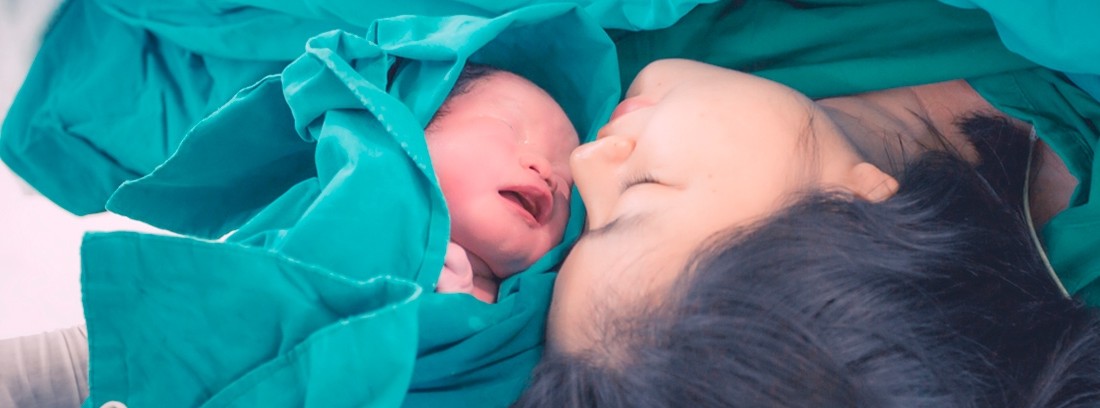Delivery attendance

In the delivery room, in addition to the Gynecologist and the Midwife, the Pediatrician must be present to assess the newborn. It must be verified that the baby does not have any health problems and that the adaptation to extrauterine life is carried out correctly.
The care after birth should be aimed at establishing normal breathing, facilitating the feeding of the baby, maintaining a good body temperature, avoiding infections and reducing the separation between mother and child to a minimum.
The series of actions to be carried out would be:
- Assessment of the newborn
- Skin-to-skin contact with his mother and stimulation.
- Umbilical cord ligation.
- Favor the first breath.
- Apgar 1st minute.
- Cleaning secretions.
- Check the patency of the natural orifices: nose, esophagus, ear canals and anus.
- Maintain the temperature (keep warm and coat the newborn with warm towels).
- Apgar test at 5 minutes.
- Avoid infections in the eyes and navel (an antibiotic ointment is applied).
- Administration of vitamin K.
- Weight and height of the newborn.
- Physical exploration.
- Identification of the newborn.
- Facilitate mother-child contact and relationship.
Promote the first breath and clean secretions
To help the child take the first breath, it is necessary to place the newborn in a suitable posture with a slight head downward tilt (head lower than the feet).
The secretions that the child may have in the mouth, throat and nose can prevent them from breathing and feeding, so they are cleaned with a mechanical aspirator or a rubber bulb (never with a gauze because we can cause injuries).
Apgar test
It is a rapid evaluation of the newborn that tells us how his general condition is. Look at heart rhythm, color, vigor, response to stimuli, and reflexes. It is a very helpful test to find out if the baby needs any special care. It is applied in two moments: one minute and 5 minutes after birth. The maximum score is 10 and a healthy baby without problems gets a score higher than 8. If the score is very low (less than 5) it is possible that the baby has problems with the cardiorespiratory system or has had difficulties during the Birth.
Keep the temperature
The newborn finds it difficult to regulate the temperature and gets cold easily. It is important to put him in the delivery room under a heat source (28-30ºC) and dry the moisture from his skin with a sterile cloth.
When the temperature change is born it is very abrupt and the baby loses a large amount of body heat for various reasons: nakedness, the temperature of the delivery room or operating room is low, the skin is wet, it has few fat reserves.
If we do not help him stay warm, the newborn can have problems: glucose lowering, metabolic disturbances (acidosis) and, in extreme situations, death.
If with the usual measures we do not control the temperature, the baby is put in an incubator.
Check the patency of the holes
The mouth should be explored to ensure that there are no abnormalities in the palate; It is also checked that the nose and anus are permeable (they are open and there is no difficulty in passing a probe). A tube is also passed through the esophagus to check that it is normal and that it connects to the stomach.
These maneuvers detect possible problems that can make it difficult to eat and breathe.
Mother-child relationship
The mother's contact with the newborn should be encouraged from the first moment by placing it on the belly and chest. It is necessary to take advantage of the first two hours of alert that the baby has after birth so that he is in direct contact with his mother "skin to skin" and offers him the breast. In this way, the newborn better regulates its temperature and establishes a good foundation for excellent breastfeeding.
(Updated at Apr 13 / 2024)